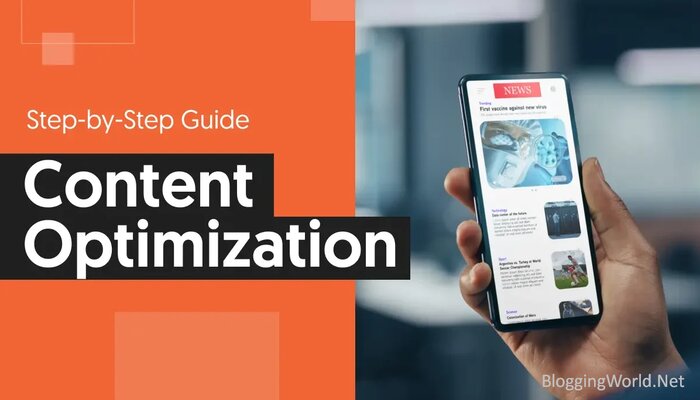Search engine optimization (SEO) continues to evolve, and staying ahead in 2025 requires a strategic approach to content optimization. With Google’s algorithms becoming more sophisticated and user expectations rising, businesses and content creators need to apply the best practices to enhance visibility, increase engagement, and improve search rankings. This article explores the most effective content optimization techniques to ensure SEO success in 2025.
Table of Contents
1. Focus on Search Intent
One of the key factors driving SEO success in 2025 is understanding and matching search intent. Google aims to provide the most relevant and valuable results based on what users are looking for. There are four main types of search intent:
- Informational: Users are seeking knowledge (e.g., “How does blockchain work?”).
- Navigational: Users want to find a specific website or page (e.g., “Twitter login”).
- Transactional: Users are looking to make a purchase (e.g., “buy running shoes online”).
- Commercial Investigation: Users are comparing options before making a decision (e.g., “best smartphones under $500”).
To optimize content effectively, tailor your pages to match the user’s search intent while providing valuable and actionable information.
Also Read: Core Web Vitals and SEO: Improve Your Site’s Performance
2. Leverage AI-Powered Keyword Research
Keyword research remains an essential component of content optimization. However, in 2025, AI-driven tools like Google’s MUM (Multitask Unified Model) and advanced keyword analytics software will play a bigger role in identifying keyword trends.
Best practices for keyword optimization:
- Use long-tail keywords that reflect natural search queries.
- Focus on semantic SEO, incorporating related terms and variations.
- Analyze voice search queries, as more users rely on voice assistants for searches.
- Optimize for local keywords if targeting specific geographical audiences.
Also Read: How Google’s Latest Algorithm Updates Affect SEO Strategies
3. Create High-Quality, Engaging Content
Content quality is a significant ranking factor. Google prioritizes E-E-A-T (Experience, Expertise, Authoritativeness, and Trustworthiness) when evaluating content.
Ways to enhance content quality:
- Provide in-depth analysis rather than surface-level information.
- Include expert insights and data-backed statistics.
- Structure content properly using headings, bullet points, and short paragraphs.
- Incorporate multimedia elements like images, infographics, and videos to enhance readability.
4. Optimize Content for Featured Snippets
Featured snippets appear at the top of Google’s search results, providing concise answers to user queries. Optimizing content for these snippets can drive significant organic traffic.
How to optimize for featured snippets:
- Use question-based headers (e.g., “What is SEO?”).
- Provide clear and direct answers in 40-60 words.
- Use tables, lists, and bullet points to structure information effectively.
- Optimize content using schema markup to improve visibility.
5. Improve Readability and User Experience
Google’s algorithms favor content that is easy to read and provides a good user experience. Key factors include:
- Using short sentences and paragraphs for better readability.
- Choosing a conversational and engaging tone that resonates with the audience.
- Ensuring a fast-loading website (use tools like Google PageSpeed Insights to optimize speed).
- Making content mobile-friendly, as most searches now occur on mobile devices.
6. Enhance Internal Linking Strategy
Internal linking helps distribute link equity across your website and improves navigation for users and search engines.
Best practices for internal linking:
- Link to high-authority pages on your site.
- Use descriptive anchor text that reflects the linked content.
- Avoid excessive linking—ensure links add value.
- Implement breadcrumb navigation to enhance user experience.
7. Optimize Meta Tags and Headings
Meta tags and headings play a crucial role in SEO optimization. They provide search engines with context and improve click-through rates.
Optimization tips:
- Write compelling meta titles (50-60 characters) with primary keywords.
- Create engaging meta descriptions (120-160 characters) that encourage clicks.
- Use H1 for the main title and H2-H6 for subheadings, incorporating relevant keywords naturally.
8. Implement Structured Data (Schema Markup)
Structured data helps search engines understand the content better and enhances search result appearance with rich snippets.
How to use schema markup:
- Implement FAQ schema for question-based content.
- Use Product schema for e-commerce pages.
- Apply Article schema for blog posts to improve visibility.
- Validate structured data using Google’s Rich Results Test tool.
9. Optimize for Voice Search
Voice search is becoming more prevalent with the use of digital assistants like Siri, Alexa, and Google Assistant. Content should be optimized for natural language queries.
Voice search optimization tips:
- Use conversational language in content.
- Optimize for question-based queries (e.g., “How can I improve website SEO?”).
- Focus on local SEO, as many voice searches are location-specific.
- Structure content in an easy-to-read format.
10. Focus on Video Content Optimization
Video content is growing rapidly and plays a crucial role in SEO success. Google often prioritizes video results, especially for how-to and tutorial searches.
Best practices for video optimization:
- Include keyword-rich titles and descriptions.
- Add closed captions and transcripts to improve accessibility.
- Optimize video loading speed and quality.
- Host videos on platforms like YouTube and embed them within relevant content.
11. Utilize Content Repurposing
Repurposing content across multiple platforms can boost visibility and traffic.
Ways to repurpose content:
- Turn blog posts into infographics, podcasts, or video tutorials.
- Convert long-form content into social media snippets.
- Update and republish old blog posts with fresh insights.
12. Measure and Analyze Performance
Continuous monitoring and analysis help refine SEO strategies for better results.
Key tools for content performance analysis:
- Google Analytics for traffic insights.
- Google Search Console to track keyword performance.
- Ahrefs or SEMrush for competitive analysis.
- Heatmaps to understand user behavior.
Conclusion
SEO success in 2025 demands a holistic approach to content optimization. By focusing on search intent, leveraging AI-powered keyword research, enhancing readability, optimizing for featured snippets, and implementing structured data, you can significantly improve search rankings. Additionally, voice search optimization, internal linking, and multimedia content will play a crucial role in driving traffic and engagement. Stay updated with SEO trends, measure performance consistently, and refine your strategies to achieve long-term success in the ever-evolving digital landscape.








